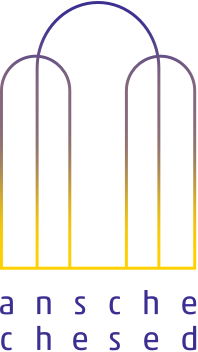My Friends – my “Notes from Jerusalem” are coming a little late: this note about our Tuesday is posting Friday – after I flew back last night. What can I say? Our days were long. I will add one more about our Wednesday and Thursday after Shabbat. Shabbat Shalom from New York!
The second day of AC’s Israel trip was intense, with emotional peaks and valleys.
You have all heard the phrase “not a dry eye in the house.” We experienced it, for real.

The day began when we met Yaron and Jacqui Rivers Vital, who shared the story of the brief but blessed life of their daughter Adi, 33, her murder on Kibbutz Holit on October 7, the unlikely release of Adi’s small sons from the hands of a kidnapper, the resilience of Anani, a bereaved husband and loving father who made it back to begin anew, and the miraculous survival of Yaron, who was on Holit that day and was nearly murdered himself.
Perhaps someday you’ll hear the story from their own mouths. Until then I will make the long story short, picking a few details, without doing justice to their tale. But this will not convey the strength and warmth of Jacqui and Yaron, bearing through unimaginable loss with tremendous open heartedness.
Jacqui was in her native Ottawa on October 7, and Yaron visited Adi for the holiday, lodging in a vacant apartment. To illustrate how thorough Hamas intelligence was, they attacked the apartments on either side of his, and left the supposedly empty one alone. Yaron barricaded himself in for lengthy hours without food and water, expecting to die the whole time. When men banged on the door, not knowing if they were Israeli or Gazan, trying to guess by their accents, Yaron took his life in his hands and opened the door … to his IDF rescuers. Like all the kibbutzim, Holit employed Gazan workers, who seemed to have provided the human intelligence that enabled the slaughter. Yaron had it in him to judge them generously. He assumes that the workers had not really wanted to betray the people of Holit, but were coerced by Hamas: “They are not nice people.”
Adi died in her safe room, after telling her children she loved them. She killed one terrorist with the family’s M-16 before being shot to death. Her boys were taken to Gaza along with a neighbor. Apparently in a PR stunt to demonstrate their “humanity,” the kidnappers videoed themselves sending the group to walk back to Israel, the 4-year-old on an injured leg, having been hit by shrapnel. Anani was on a pre-dawn hike on the morning of the “Black Sabbath.” When he made it back to the kibbutz, he believed his children and wife were taken hostage, only to be stunned to learn his boys were returned with minimal physical injury. For three days, they believed Adi was captured. Only on Wednesday was her body was discovered in the wreckage of the home, booby-trapped with 50 grenades. Anani and Adi’s parents expressed the same reaction: relief. For three days of uncertainty they imagined she was undergoing the worst possible suffering. After her body was found, at least they knew she was not being tortured. Jacqui told us that for those three days her muscles were spasming so badly she could not move her neck. But when Adi’s body was found, at least the uncertainty ended. “I cannot imagine what it is like to not know the fate of your children for more than 250 days,” she said.
At Adi’s funeral, this Zionist family sang Hatikva, clinging to hope. They don’t typically repeat that when telling their story, Jacqui said, but she closed the presentation by asked us to sing with her, and those of us who could bear it sang along.
The Vitals spoke with us to support the fund for their grandchildren. You can donate here and/or obtain a “Lioness” t-shirt in memory of a woman who defended her children like a lioness.
Then the day got darker. Abraham Levine, an analyst from the Alma Research Center, which focuses on Israel’s Northern border, spoke to us about the grim conflict with Hezbollah, the Lebanese Shiite militia. Hezbollah is many times more armed, better trained and more capable than Hamas, with missiles that can reach everywhere in Israel. Hezbollah, too, has plans to execute in the North the same sort of assault Hamas inflicted on the South, combining missiles, ground incursions, and civilian killings and kidnappings. Levine argued that Israel and its supporters should not view the current war only through the lens of the Israel-Palestine conflict – though that is obviously central – but as a facet of Iran’s bad intentions throughout the region. Hamas, Hezbollah and other militias throughout the Middle East are proxies for Iran’s Ayatollahs, Israel’s most lethal and impeccable enemies. Even if the occupation ends and the Palestinians’ suffering ceases, as it should, Iran’s designs will not disappear.
Then the day got darker. Abraham Levine, an analyst from the Alma Research Center, which focuses on Israel’s Northern border, spoke to us about the grim conflict with Hezbollah, the Lebanese Shiite militia. Hezbollah is many times more armed, better trained and more capable than Hamas, with missiles that can reach everywhere in Israel. Hezbollah, too, has plans to execute in the North the same sort of assault Hamas inflicted on the South, combining missiles, ground incursions, and civilian killings and kidnappings. Levine argued that Israel and its supporters should not view the current war only through the lens of the Israel-Palestine conflict – though that is obviously central – but as a facet of Iran’s bad intentions throughout the region. Hamas, Hezbollah and other militias throughout the Middle East are proxies for Iran’s Ayatollahs, Israel’s most lethal and impeccable enemies. Even if the occupation ends and the Palestinians’ suffering ceases, as it should, Iran’s designs will not disappear.
Levine expressed confidence that Israel can prepare and prevail over this threat. But we Americans found it all hard to take. Our group members were mostly shaken. I related this picture later to an Israeli friend, who politely asked me to shut up: “We’re just barely functional as it is. If you tell us all this, you’ll only make it worse.”

After all those dark clouds, you have to do something positive. We visited Latet, Israel’s leading poverty relief organization, serving all ethnic, regional and religious sectors. We learned about the prevalence of Israeli poverty – around one-fifth of the population and around one-third of children, – which has worsened during the war. We packed boxes of cleaning and hygiene supplies, which will help struggling people keep their homes and bodies clean. As I contributed to each box, I tried to imagine the family that would benefit from our small labors.

Our next stop was the Knesset, where we met with Rabbi Gilad Kariv, Knesset member representing the Labor Party. He is an Israeli-born Reform rabbi, formerly the head of that movement in Israel, who has used his elective office to stand up against religious coercion and the political domination of the Orthodox parties. Thanks so much to Ansche Chesed’s great friend Rabbi Naamah Kelman-Ezrachi for arranging this special experience. It was thrilling to enter the assembly of the State of Israel, seeing the historical documents arrayed on the walls and the Marc Chagall mural, strolling past the offices of each parlimentarian. The Knesset certainly is less majestic than our Capitol, but I think we all found it a special experience that doesn’t happen every day. (Kariv was not the only law-maker we saw in Israel. We also ran into US Representatives Stenny Hoyer, Joe Wilson, and Glenn Ivey at Kfar Azza the day before.)
Like most Israelis – on the left and the right – Kariv said the current political regime has lost the nation’s confidence. The coalition might hang on for a few months, he said, but he expects it to fall, and give way to different, often younger, leaders. Kariv’s Labor Party has a new leader: Yair Golan, the former IDF deputy chief of staff, who is renowned for personally having rescued Nova party-goers, hiding in the fields on October 7. Kariv is in Golan’s camp, and said expects the center-left – not to return to its former dominance – but to increase in power and become a central bloc in a future coalition.

If you had asked me on October 6, I would have said 2023 was a great year for Israeli public life. Since January, large masses of citizens from the left to the center-right had mobilized against a judicial system overhaul that would have concentrated power in the hands of the Knesset majority, curtailing checks-and-balances by the courts, and – to a lesser extent – a resistance to the racist nationalists of the far-right. To me, these protest movements represented a surge in civic virtue, inspiring hope.
Our last stop of Tuesday was a meeting with one of the leaders of the Jerusalem branch of those protests, Ephraim Shoham-Steiner, whose day job is as medieval Jewish historian at Ben-Gurion University of the Negev. The Jerusalem protests – who named themselves שומרים על הבית המשותף/“Protecting Our Common Home” – differed somewhat from those in Tel Aviv, he said, by including more religious people, and more explicitly addressing Israel’s non-Jewish minority.
After a period of national unity, the protests have returned, now stressing especially the demand for the ultra-Orthodox to share the burdens of IDF service. While thousands of Haredi men have no such obligation, other families face terrible anxieties. “I have five sons,” he said, “so my odds are not good.”
Effie grew up religiously observant, and remains a faithful, practicing and believing Jew. But when the racist elements of the “Religious Zionism” party joined the government at the end of 2022, he did something radical: He took off his kippah. He didn’t want to walk through the streets of Israel wearing a symbol that aligned him with people he reviled. “I still have tzitzit under my shirt, and I wear my kippah for prayer and study. But otherwise, it’s in my pocket.”
Issues like these – drafting the Haredim, the association of religious faith with aggressive nationalism – have divided the country for years. In Israeli political discourse, there is an expression that connotes something like “red” and “blue” states: people wonder whether Israel is irrevocably divided into the states of “Israel” [Western, modern, largely secular] and “Judah” [more explicitly religious and nationalist]. Can these elements in society coalesce in a single country, I asked? “I don’t know,” he replied.
Wishes for besorot tovot, good tidings, from Jerusalem,
Jeremy




